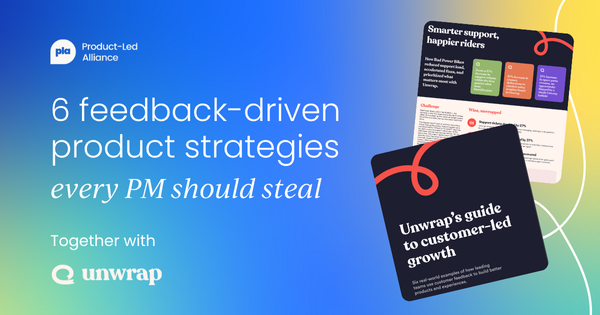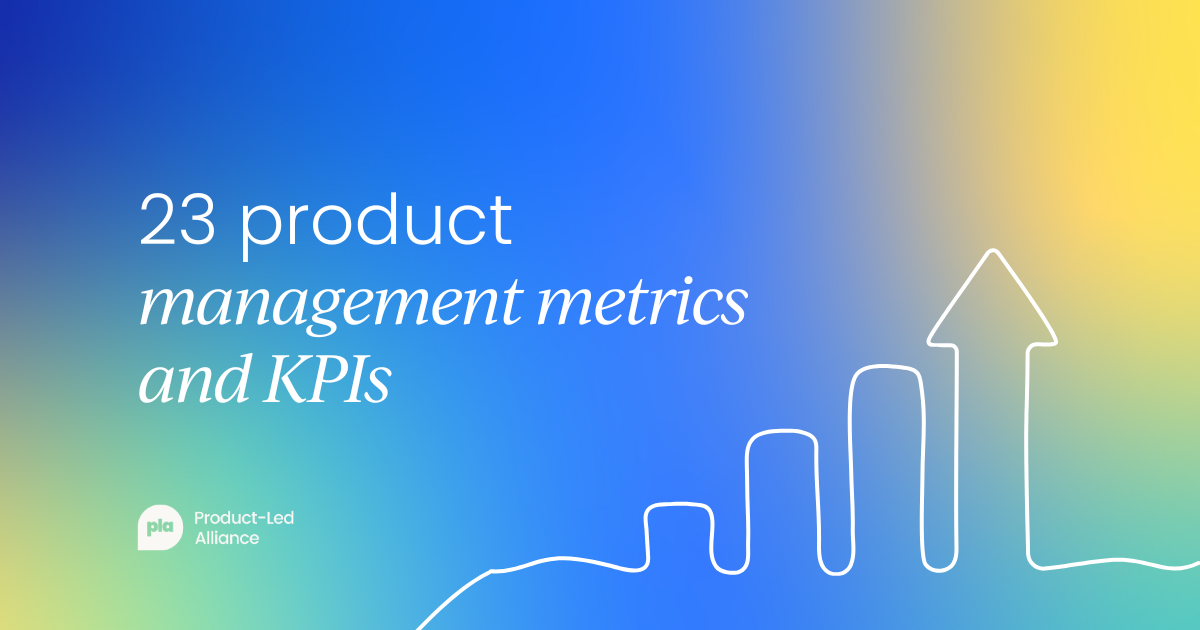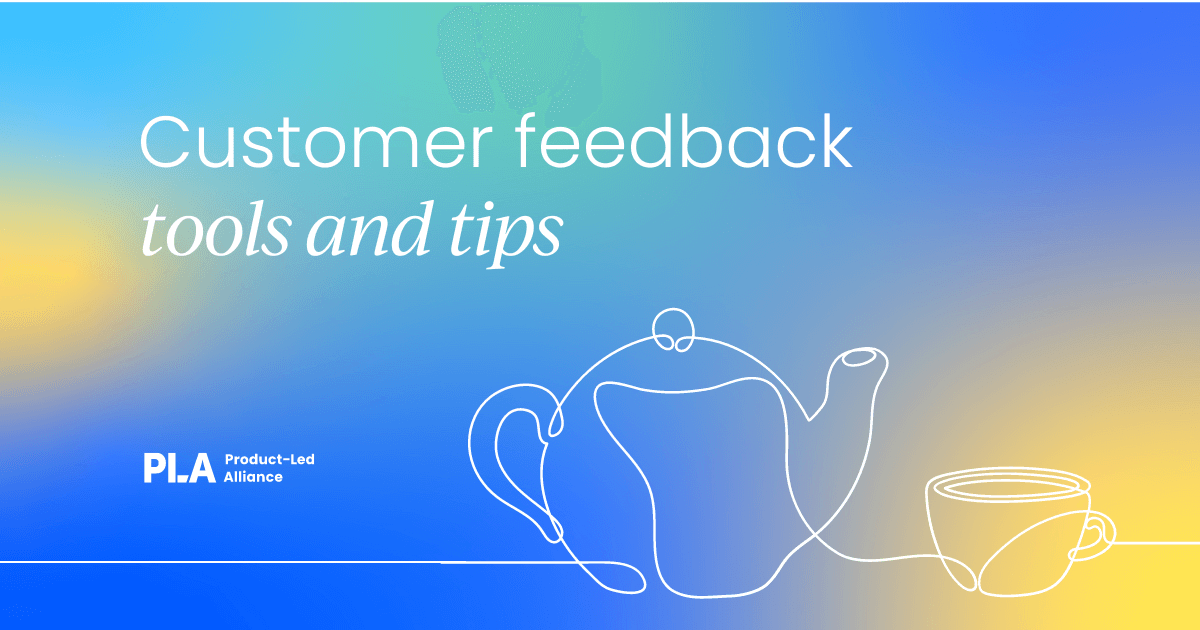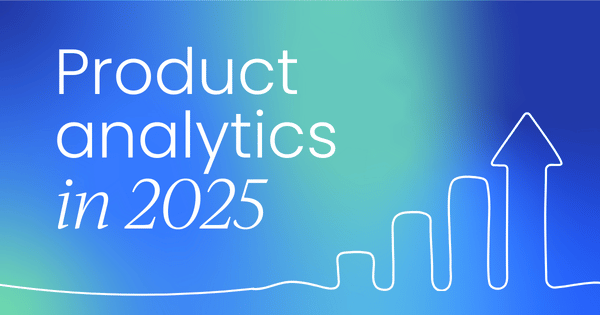You've seen the headlines, heard the buzz, and probably even dabbled in it yourself. Product analytics is no longer just a nice-to-have; it's the beating heart of successful product development.
But what does that really mean for your product strategy?
Our State of Product Analytics report dives into how product teams are using data to drive results. Including the tools they swear by, the goals they're crushing, and the metrics that move the needle.
Product analytics is driving success
Let's kick things off with a stat that should make every PM sit up a little straighter: a whopping 72.5% of teams say product analytics helped them hit their goals in the past year.
We're not talking marginal improvements; this is a resounding “yes” to the power of data, up a solid 5.6% from last year. Analytics is now a huge part of shaping product strategy and roadmaps.
This goes beyond tweaking a button color or optimizing a landing page. We're talking about fundamental shifts that lead to real, measurable success. Product analytics is becoming an indispensable part of product strategy, helping teams gain a deeper understanding of user experience and needs.

Retention is the new revenue
Remember when revenue was the undisputed king of product goals? Well, times are a-changin’.
Our report reveals a fascinating shift: retention has overtaken revenue as the #1 goal of product analytics this year. We're seeing 39.2% of teams prioritizing retention, with revenue following closely at 37.3%.
This isn't to say revenue isn't important – of course it is!
But this shift signals a more mature, sustainable approach to product growth. As Parul Jain, Principal Product Manager at Walmart Global Tech, puts it:
“The shift towards retention is evident. With economic volatility, revenue can fluctuate significantly due to external factors.
“Retention cuts through that noise.”
It makes total sense, right? In a world of increasing competition and economic uncertainty, holding onto the customers you have is often more cost-effective and indicative of product value than constantly chasing new ones.
If users are sticking around, they're finding consistent value, trusting your brand, and seeing your product solve a real problem. That’s a powerful signal, especially in volatile markets.
Gaby Paul, Principal/Group Product Manager at Sedex, echoes this sentiment: “I believe the increased emphasis on retention will be because more companies are focusing their efforts on doubling down on what they do best to increase customer satisfaction and stickiness.
“With constant changes in the market and increased threat from competitors, companies are depending more and more on the loyalty of existing customers whilst finding new ways to generate additional revenue from their existing customer base.”
So, while revenue generation might still be a top priority for some, the spotlight on retention shows a collective understanding that long-term user engagement and sustainability are the true north stars for product teams in 2025.

Your analytics goals should grow with you: A stage-by-stage guide
One of the most compelling findings in our report is how your product analytics goals evolve with your company's growth stage.
There’s no one-size-fits-all metric, and trying to apply a mature company’s goals to an early-stage startup is like asking a toddler to run a marathon – it just doesn’t make sense!
Here’s how analytics priorities shift as companies mature:
Early-stage (pre/post-product-market fit)
At this stage, you're all about discovery and validation. You’re asking: Are users getting to that ‘aha!’ moment? Is our core value proposition landing?
- Top Goal: Activation (42.8%)
- Other Key Goals: Retention (28.6%), Revenue (28.6%)
For early-stage organizations, analytics helps you understand user behavior, optimize onboarding flows, and ensure users are discovering the core value.
As Cindy Camacho, Founder of VOC Strategies, wisely states, “Early stage is all about getting users to that first 'aha' moment. Activation tells you if your onboarding and core value prop are landing.”
Mid-growth
Once you’ve found product-market fit, the focus shifts. Now, it’s about scaling, monetizing, and building sustainable growth. You’re trying to balance keeping users happy with growing your bottom line.
- Top Goal: Revenue (47.1%)
- Other Key Goals: Retention (29.4%), Activation (17.6%)
Mid-growth companies are all about optimizing pricing, understanding usage patterns, and leveraging product-led growth levers. You’re past the initial ‘aha’ and into the “how do we make this grow sustainably?” phase.
Late-growth
At this mature stage, you’re maximizing value from your existing user base and focusing on long-term relationships. Retention isn't just a goal; it's a differentiator.
- Top Goal: Retention (48.2%)
- Other Key Goals: Revenue (33.3%), Acquisition (11.1%), Activation (7.4%)
Here, you're deep-diving into cohort analysis, churn prediction, and increasing customer lifetime value (LTV). You've built a strong product; now you're perfecting the user experience and ensuring loyalty.
Parul Jain highlights the nuance for larger organizations: “For multimarket organizations like ours, it gets more nuanced. Different regions may be at varying stages of maturity, so we tailor our analytics goals by market.
“It’s less about applying a one-size-fits-all approach and more about understanding where each product or region is on its journey and aligning goals accordingly.”
The takeaway is clear: align your analytics focus with your company's stage. The right metrics at the right time are your secret weapon for guiding smarter decisions, reducing wasted effort, and unlocking meaningful growth.

How analytics shapes your roadmap
So, we know product analytics helps you hit your overarching goals. But what about the day-to-day, feature-by-feature impact?
Turns out, analytics isn't just moving the needle on big-picture objectives; it's actively shaping your product roadmap in exciting ways.
Product teams are creating big changes in their products based on analytics such as:
- 68.6% improved an existing feature.
- 52.9% developed a brand-new feature.
- 43.1% launched an entirely new product.
These stats paint a picture of strategic, iterative product development, where data is a core driver of innovation and user satisfaction. But it's not always about adding new things. Sometimes, the bravest decision is to take something away.
- 29.4% of teams actually removed an old feature.
- 25.5% drastically changed or repositioned a product.
Think about that for a second. Analytics is giving product teams the confidence to make those tough calls – to prune the product tree, streamline experiences, and ensure every feature truly serves a purpose.
It's about being lean, agile, and always focused on delivering maximum value.
Gaby Paul shares a powerful example from Sedex: “Most recently, we decommissioned our legacy customer platform and re-built must-have features and capabilities on our new platform.
“We had limited time, budget, and resource, so had to be extremely strict when it came to prioritization. We used analytics to inform every decision.
“Where feature usage was lower, we had to decide to switch them off and not re-build them – even if it meant upsetting some of our customers or internal staff in the process.”
That's the power of data in action: enabling difficult but necessary decisions.
Cindy Camacho recalls a time when analytics saved her team from a misstep: “We were planning to build a new feature based on feedback from a few key accounts. But when we looked at the data, only a tiny fraction of users were even using the workflow that the feature depended on.
“Without analytics, we would've invested a ton of time and resources into something that wouldn't have moved the needle. Instead, we shifted our focus to optimizing a high-traffic workflow and saw a significant lift in engagement. The data kept us honest.”
This isn't just about efficiency; it's about building better products with less waste and more confidence. Analytics provides the truth, even when it's not what you initially wanted to hear.

Key data sources: What are PMs actually using?
When you’re making critical product decisions, what data do you lean on? Our survey revealed that product managers are primarily relying on two key sources:
- Product usage data (37.3%)
- Data from internal teams (37.3%)
This points to a strong emphasis on understanding what users are doing within the product (quantitative metrics) and combining that with insights from cross-functional collaboration.
Interestingly, customer feedback data comes in notably lower at 15.7%, a drop from last year. This suggests that while PMs value customer feedback (as we'll see later!), it might not always be integrated as a primary data source in the same way as pure usage metrics or internal team insights.
On the other hand, competitive intelligence, though still a smaller piece of the pie at 5.9%, is on the rise, jumping from 0.8% last year. This indicates a growing awareness of the external landscape and the need to benchmark against competitors.
The future is analytical: Investments on the horizon
It's clear product analytics is making a tangible impact, so it's no surprise that investment in this area is strong and growing. Most teams (a hefty 68.6%) have already invested in analytics tools, and a quarter have invested in storage solutions. But what's next?
The future of product analytics isn't just about more dashboards; it's about deeper, more predictive insights. Our report shows that 37.3% of teams plan to invest further in analytics software in the near term. This reinforces that these tools remain central to daily decision-making.
However, the most exciting trend is the sharp rise in planned investment for data science tools, jumping from just 3.9% currently to a significant 23.5% planning to adopt them next.
This is a strategic pivot, signaling that product leaders are moving beyond simply tracking metrics to actively leveraging predictive insights and gaining a deeper understanding of customer behavior.
This growing focus on data science suggests product teams are maturing, moving past basic reporting towards more advanced, strategic use of data.
Data science is fast becoming a critical part of the product management toolkit, helping teams anticipate churn, identify demand shifts, and make truly proactive decisions.

Choosing the right tools
When it comes to selecting the right product analytics vendor, what truly matters to product professionals? Our survey highlighted some key priorities:
- Total cost of ownership and scalability (33.3%)
- Compatibility with current solutions (31.4%)
These top two criteria suggest that product teams are thinking long-term.
They want solutions that can grow with them, integrate seamlessly into their existing tech stack, and deliver sustainable value without unexpected costs or headaches.
Ease of use, while still important, ranked lower, indicating that power and integration are often prioritized over a simpler setup.
Gaby Paul offers a pragmatic view: “Cost and compatibility will always be a priority when selecting any new tools or integrations, but I think ease of use has to be factored in, especially in companies like mine where our analytics tools are used by every department across the business with different levels of technical acumen.”
Cindy Camacho advises a hands-on approach: “My advice is to run a pilot, involve your engineers and analysts early, and make sure you’re not picking something just because it’s trendy.”
The most-utilized capabilities
So, once you have your tools, what are product teams actually doing with them?
- Tracking is by far the most utilized feature, cited by 47% of respondents. This makes perfect sense – you can't analyze what you don't track!
- Dashboards follow at 27.5%, highlighting the importance of visualization and reporting for making data accessible.
While foundational tracking and dashboards are crucial, experts are already looking to the future. Parul Jain envisions a world where “GenAI-powered natural language querying will empower teams to access insights more intuitively, reducing reliance on specialized roles.”
Imagine just asking your analytics platform a question and getting an immediate, insightful answer!
Gaby Paul agrees, “I think we will continue to see an increase in teams using AI to simplify large volumes of insight to drive action.” This will be especially critical for busy product teams who need quick access to sentiment analysis for prioritization and roadmapping.
Cindy Camacho predicts must-have capabilities like:
- Real-time alerting when key metrics shift
- Predictive insights around churn or upsell
- AI summarizing key user behaviors
- Cohort analysis that’s easy to slice and act on
The message is clear: the future of product analytics tools isn't just about data collection; it's about intelligent, actionable insights delivered with speed and simplicity.

Conclusion: Your product future is data-driven
Product analytics has undeniably become the difference between guessing and growing. As our report clearly shows, product teams across all industries and growth stages are leaning on data to guide critical decisions.
From improving retention and driving revenue to shaping roadmaps and refining user experiences, the goal is consistent: to build better products through deeper insights.
While mature organizations are leading the charge with dedicated analytics functions and widespread data usage, there's still immense opportunity, especially for mid-stage companies looking to scale efficiently.
The next steps for product teams include:
- Invest earlier in analytics capabilities.
- Empower your teams with the right tools and training.
- Embed data into your everyday workflows.
By doing so, your product org will move faster, make decisions with greater confidence, and ultimately, better serve your users.
Our latest report reveals how product managers across industries are leveraging analytics to shape roadmaps, increase retention, and build products users can’t live without.
Want to make faster, better-informed product calls? Get your free copy now 👇



 Follow us on LinkedIn
Follow us on LinkedIn









